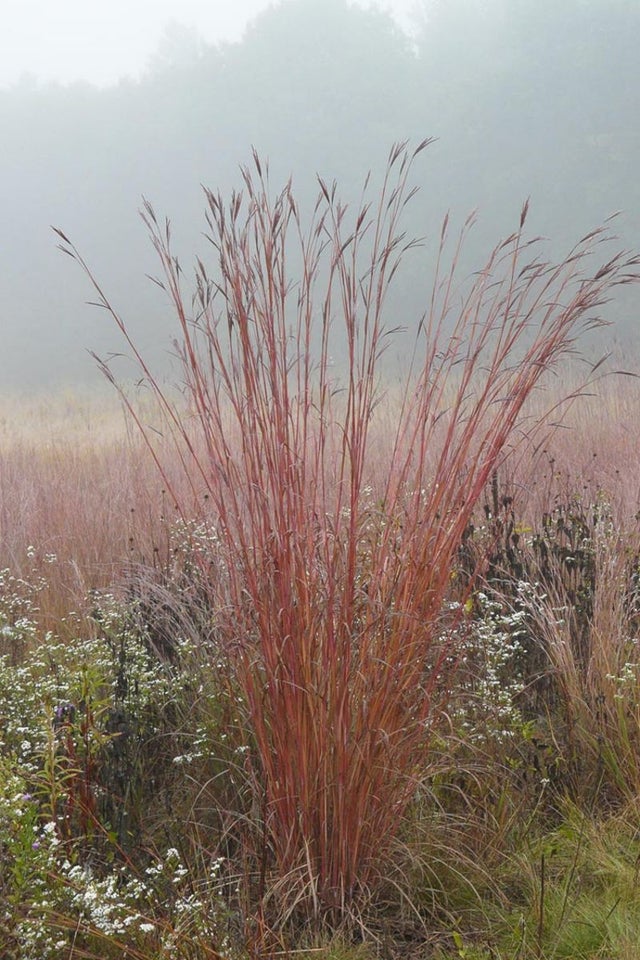- Native Plants and Wildflowers
- >
- Big Bluestem
Big Bluestem
Andropogon gerardii, also known as Big Bluestem, is a perennial grass native to Michigan. It is a striking grass originally found in prairie habitat. Today Big Bluestem naturalizes well in a meadow setting, but it can also be used as a backdrop, accent plant, or privacy screen. Shown in the pictures are this stately grass used in landscaping to soften a water feature and frame a walkway/provide a backdrop for benches.
Big Bluestem reaches 7 feet tall in warm weather. It does best in full sun and medium to dry, poor soil. It will tolerate partial shade and wet or rich soil, but such conditions promote excessive growth and the plant may require support to avoid flopping in wet, rich soil. To keep it standing tall, plant in medium-dry, sandy or clay loam in full sun.
Big Bluestem is likely to lay down in heavy snow, but the new growth will reach for the sky again in spring. To avoid smothering adjacent plants, cut to 18" in fall. Under ideal conditions, especially in moist soil, Big Bluestem spreads vigorously by seed, and may not be suited for small gardens or may need to be paired with other vigorous plants, such as Switch Grass. Drought tolerant once established, with a nine-foot root system that resists erosion.
Stems are tinged with blue in the spring, red in the summer, and bronze or lavender in the fall. The seed heads have three "toes", giving it the other common name of turkeyfoot grass. The seed heads make a nice dried flower.
This plant provides cover for wildlife during nesting and from predators, habitat for beneficial insects, and serves as a fall food source for many birds. Big Bluestem is the host plant for many skipper and other butterflies, moths, and other insects. It is eaten by several types of grasshopper, katydids, and thrips, making it a good source of food for insectivorous birds. In a field setting, the foliage is eaten by voles, which are a main food source for raptors like red-tailed hawks.
